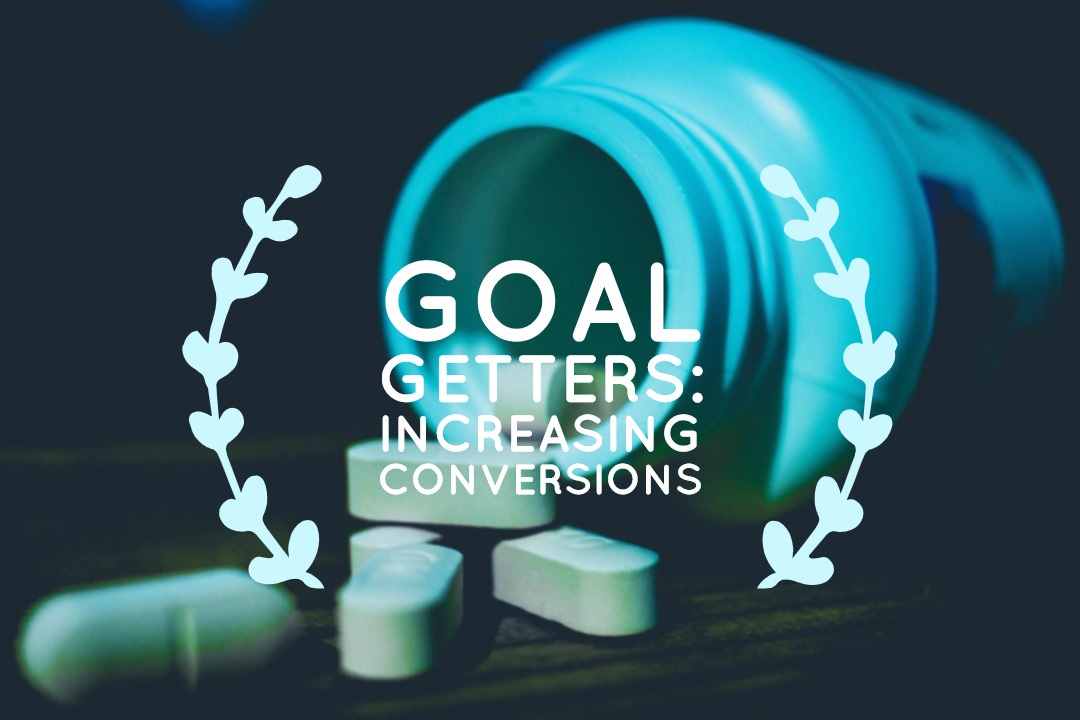Your cart is currently empty!

Goal Getters: Increasing Conversions
Increasing conversions is a goal for almost every website. If you want to determine whether your website is doing its job, this is one of the metrics you’ll want to follow.
We find that many website owners have no idea whether their website is increasing conversions or not.
Here are the steps involved in figuring it out — and increasing conversions.
Determine your goals.
A conversion at your website can be anything that you can measure online. Here are some examples of common web goals:
- E-commerce sales
- Submitting a new patient form
- Signing up for a newsletter
- Subscribing to your blog
- Making an appointment
When a web visitor takes one of these actions, they’ve either bought something (here, let’s think of an appointment as a purchase of a service) or signaled that they’re interested in a possible purchase in the future. These actions clearly connect with business goals like gaining more patients, increasing revenue, and so forth.
Websites can have other, more complicated goals. You might want to show thought leadership in your community. You may want to improve your level of patient education, increase referrals from other physicians, or reduce the number of no-shows for appointments. All you need to do is identify online actions that show success for your goal, whatever that goal may be.
You might count it as a conversion when a visitor confirms an appointment online, for example. You can track that confirmation. You can also track no-shows. If no-shows shrink when confirmations increase, you’ll know that confirmations are a measurable online action associated with that goal.
Track online actions.
You can track some online actions directly at your website. Kyle Johnson fills out a new patient form, receives a response, and books an appointment online. When he shows up for his appointment, you note that he completed this process, and you know that your website brought you a new patient.
You could keep these notes on a clipboard, make a spreadsheet, or put a colored flag on the physical files for patients who found you online.
But tracking these actions through your website gives you some advantages. Check the screenshot below, from Google Analytics. It shows that Direct traffic (mostly traffic from people who type in the URL or use a bookmark) brings us much less traffic than Organic Search. But look at that conversion rate! 11.52% of our Direct visitors completed a conversion goal. The total number of conversions from Direct traffic is larger than the total number of conversions from Organic Search traffic, even though we have way more visits from Google than Direct visits.

This kind of information can help us decide where we should put our resources and which groups are most likely to help us reach our goals. We might see, for example, that a large percentage of our new patients last year first came to us from social media. We could also see that our typical new patient visited eight times before filling out our form, or that new patients typically visited a higher than average number of pages before they converted.
We couldn’t gather that kind of data by hand. Fortunately, we simply have to set up Goals (online actions chosen as conversions) in Google Analytics, and we have easy access to this kind of data.
There are other software tools that can track specific kinds of conversions for us. We find that Google Analytics works well and it’s free, but you might want to explore other options as well.
Do more of what works.
When you read about conversion optimization, you might find it easy to get stuck on whether an orange button or a red one will make it more likely that your visitors will subscribe to your newsletter. These kinds of detailed questions are useful, and the A/B testing they require can make a difference at your website over the long run.
When you’re first starting to work on increasing conversions, though, it makes sense to identify what already works for you, and do more of it.
If social media referrals bring you more new patients than email newsletters, then it makes sense to put more effort into social media. If — as we usually see — Organic Search and Direct traffic are your top converting traffic sources, put more eggs into those baskets.
There are some things that will tend to increase online conversions for most websites: have a polished, professional website, for example, and add new content frequently. Once you’re pat these basics, though, more specific strategies will be more valuable. Working with your own data generally gives you the best results.
If you need help capturing, analyzing, and determining action steps for your website’s data, we’re happy to help. Click on the image below to get your own custom SEO Strategy Document.
by
Tags:


Leave a Reply